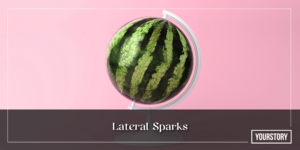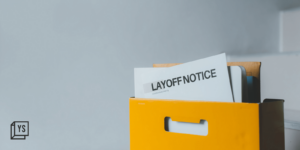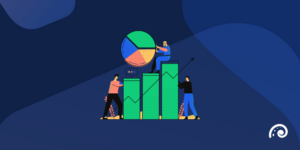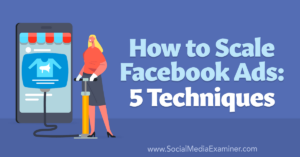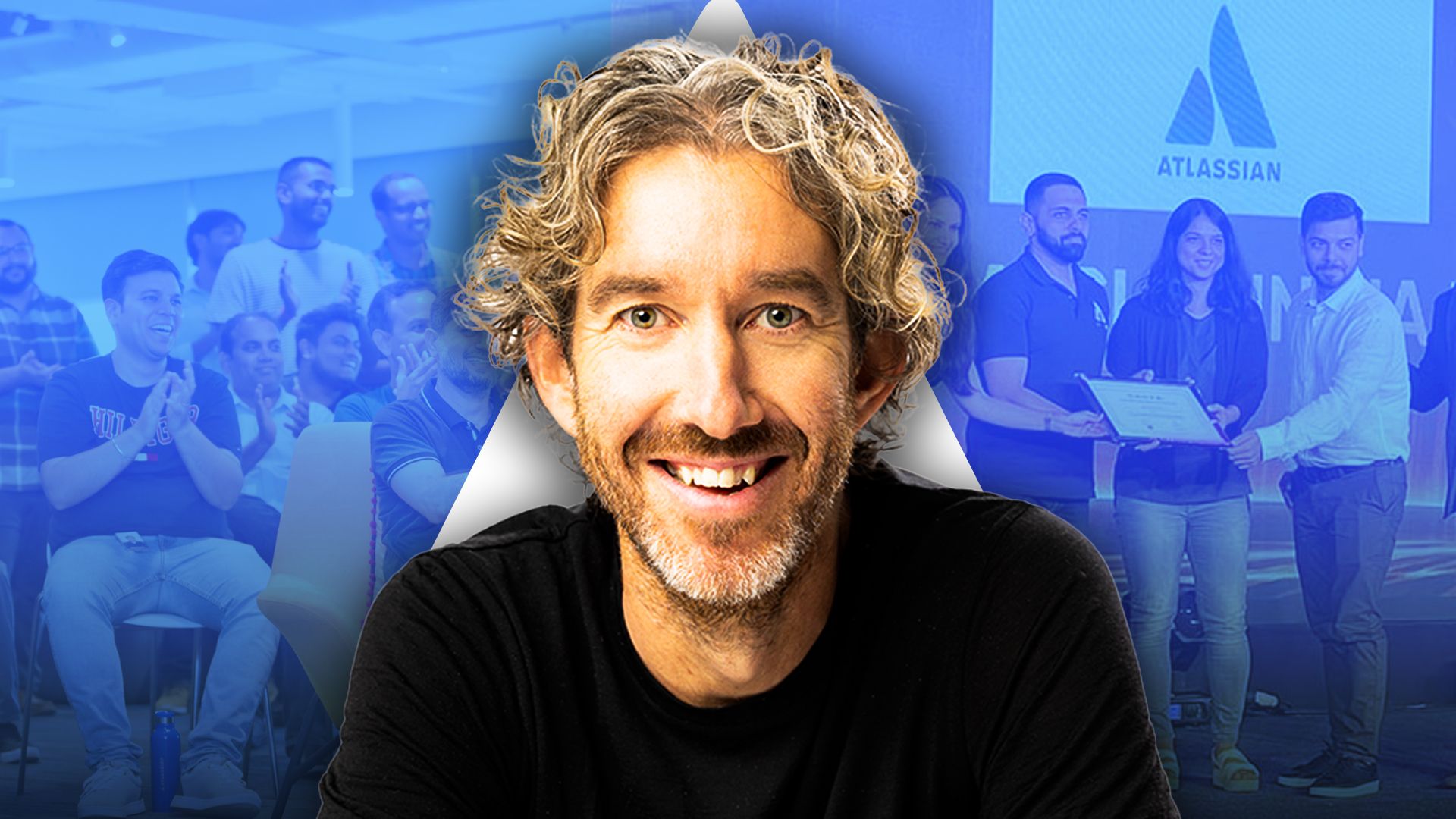
- Atlassian wants its employees to feel pride in their work without being restricted by hierarchical structures of decision-making.
- Scott Farquhar, co-founder and co-CEO, Atlassian, believes in encouraging employees to do more than what they thought was possible.
- Atlassian believes in trusting employees, allowing them to choose where they work through it’s remote-first policy, Team Anywhere.
” data-brand=”yourstory” contenteditable=”false” data-clicktext=”” data-clickurl=”” data-pageurl=”https://yourstory.com/2023/09/how-atlassian-built-a-people-first-culture” data-sectiontype=”Key Takeaways” data-emailid=”sadia@yourstory.com”>
font-size: 1rem;
padding-bottom: 1.1rem;
color: #171B1C;
width: auto !important;
padding: 1.5rem 0.875rem;
margin: 1rem 0rem !important;
background: #FFFEF5;
box-shadow: 0px 4px 24px rgba(130, 150, 165, 0.25);
height: 100%;
display: block;
position: relative;
.keyTakeAWaysContainer li, .keyTakeAWaysContainer p
font-family: Adobe Caslon Pro !important;
font-style: normal;
font-weight: 400 !important;
font-size: 21px !important;
line-height: 29px !important;
color: #0F171C !important;
.ql-editor .keyTakeAWaysTitlePara
font-family: Adobe Caslon Pro !important;
font-style: normal;
font-weight: 700 !important;
font-size: 20px !important;
color: #FFFFFF !important;
margin: 0 !important;
text-align: center;
line-height: 20px !important;
.keyTakeAWaysTitlePara
font-family: Adobe Caslon Pro !important;
font-style: normal;
font-weight: 700 !important;
font-size: 22px !important;
color: #FFFFFF !important;
margin: 0 !important;
text-align: center;
line-height: 20px !important;
margin-top: 5px !important;
.keyTakeAWaysWrapper
position: relative;
margin: 6% 0px;
.ql-editor .keyTakeAWays
margin: 1rem !important;
.keyTakeAWays
margin: 3rem 1rem !important;
.keyTakeAWays ol li:before
counter-increment: headings;
content: counter(headings) ”;
.ql-editor .keyTakeAWays ol li
padding-top: 2rem;
list-style-position:outside;
list-style-type: none;
.ql-editor .keyTakeAWays ul li
padding-top: 2rem;
list-style-position:outside;
list-style-type: disc;
.keyTakeAWays ol li
padding-top: 2rem;
list-style-position:outside;
list-style-type: none;
.keyTakeAWays ul li
padding-top: 2rem;
list-style-position:outside;
list-style-type: disc;
.keyTakeAWays ol li
padding-top: 2rem;
list-style-position:outside;
list-style-type: none;
display: table;
.keyTakeAWays ul li
padding-top: 2rem;
list-style-position:outside;
list-style-type: disc;
.keyTakeAWays ol li:not(.ql-direction-rtl), .keyTakeAWays ul li:not(.ql-direction-rtl)
padding-left: 0 !important;
.ql-editor .keyTakeAWays li::before,
.ql-editor .keyTakeAWays li::marker
width: 12px;
height: 24px;
font-family: Adobe Caslon Pro !important;
font-style: normal;
font-weight: 400;
font-size: 21px;
line-height: 24px;
color: #0F171C;
padding-right: 0em;
.keyTakeAWays li::before,
.keyTakeAWays li::marker
width: 12px;
height: 24px;
font-family: Adobe Caslon Pro !important;
font-style: normal;
font-weight: 400;
font-size: 21px;
line-height: 24px;
color: #0F171C;
padding-right: 0em;
.keyTakeAWays li::marker
unicode-bidi: unset !important;
font-variant-numeric: unset !important;
text-transform: none;
text-indent: 0px !important;
text-align: unset !important;
text-align-last: unset !important;
.keyTakeAWays ul > li::before
display: inline-block;
white-space: nowrap;
width: unset;
.ql-editor .keyTakeAWays .inline_link
color: #0F171C !important;
border: 1px solid #0F171C;
padding: 2px 5px 0px !important;
text-decoration: none !important;
margin: 0px 3px 5px !important;
.keyTakeAWays .inline_link,
.keyTakeAWaysContainer > ol > li > .link,
.keyTakeAWaysContainer > ul > li > .link
color: #0F171C !important;
border: 1px solid #0F171C;
padding: 5px 5px 0px 5px !important;
text-decoration: none !important;
text-align: center !important;
display: inline-block !important;
margin: 0px 3px 5px !important;
.ql-editor .keyTakeAWays .inline_link,
.ql-editor .keyTakeAWaysContainer > ol > li > .link,
.ql-editor .keyTakeAWaysContainer > ul > li > .link
color: #0F171C !important;
border: 1px solid #0F171C;
padding: 5px 5px 0px 5px !important;
text-decoration: none !important;
text-align: end !important;
display: inline-block !important;
margin: 0px 3px 5px !important;
.keyTakeAWays u
border-bottom: 1px solid #0F171C;
text-decoration: none !important;
padding-bottom: 0px !important;
display: inline-block !important;
width: auto !important;
.keyTakeAWays .keyTakeAWaysPointsWrapper
margin: unset !important;
.keyTakeAWaysContainer p:is(:first-child)
margin: 4% 1% 3% 5.5%;
.keyTakeAWaysContainer p:not(:first-child)
margin: 4% 1% 3% 5.5%;
.keyTakeAWaysContainer p:last-child:has(br:only-child)
margin: 0 !important;
.keyTakeAWaysContainer p:is(:first-child) .keyTakeAWaysTitleWrapper
top: -1rem;
.keyTakeAWays .company-widget
font-size: 20px !important;
color: #000000 !important;
cursor: pointer !important;
font-weight: 600 !important;
font-family: Adobe Caslon Pro !important;
display: unset !important;
.ql-editor .keyTakeAWays .company-widget::after,
.keyTakeAWays .company-widget::after
font-family: pt-sans !important;
content: ‘i’;
font-size: 12px !important;
border-radius: 20px !important;
border: 2.6px solid #000000 !important;
color: #000000 !important;
transform: translateY(-24%) !important;
line-height: 14px !important;
display: inline-block !important;
height: 17px !important;
width: 17px !important;
margin: 0px 0.2rem !important;
text-align: center !important;
font-weight: 900;
padding-top: 2px;
.ql-editor .keyTakeAWaysTitleWrapper
height: 37px;
width: 181px;
display: flex;
align-items: center;
background: black;
justify-content: center;
position: absolute;
top: -1rem;
left: 6%;
.keyTakeAWaysTitleWrapper
height: 37px;
width: 210px;
display: flex;
align-items: center;
background: black;
justify-content: center;
position: absolute;
top: -1rem;
left: 6%;
.ql-editor .keyTakeAWays ul
counter-reset: headings;
.keyTakeAWays ul
counter-reset: headings;
.ql-editor .keyTakeAWays ol
counter-reset: headings;
.keyTakeAWays ol
counter-reset: headings;
.keyTakeAWays ol
margin: 0 !important;
padding: 0 !important;
.ql-editor .keyTakeAWays ul, .ql-editor .keyTakeAWays ol
margin: 0px 0px 0px 0.8rem !important;
padding: 0 !important;
border-collapse: separate;
border-spacing: 1.5rem;
.keyTakeAWays ul
margin: 0px 0px 0px 0.8rem !important;
padding: 0 !important;
border-collapse: separate;
border-spacing: 1rem 2rem;
.keyTakeAWays ol
margin: 0px 0px 0px 0.5rem !important;
padding: 0 !important;
border-collapse: separate;
border-spacing: 1rem 2rem;
.ql-editor .keyTakeAWays ol, .ql-editor .keyTakeAWays ol
padding: 0 !important;
border-collapse: separate;
border-spacing: 1.5rem;
.keyTakeAWays ol
display: table !important;
.keyTakeAWays ul
display: table !important;
.keyTakeAWays ol li
list-style: none !important;
display: table-row !important;
.keyTakeAWays ul li
list-style: none !important;
display: table-row !important;
text-indent: unset !important;
.keyTakeAWays ol li::before
display: table-cell !important;
text-align: right !important;
.keyTakeAWays ul li::before
display: table-cell !important;
text-align: right !important;
padding-right: 0rem !important;
content: “\2022” !important;
.ql-editor .keyTakeAWays ul li:not(.ql-direction-rtl)::before
margin: 0px !important;
@media (max-width: 769px)
.keyTakeAWaysContainer p:is(:first-child)
margin: 13% 1% 3% 5.5% !important;
.keyTakeAWaysContainer p:not(:first-child)
margin: 4% 1% 3% 5.5% !important;
.keyTakeAWays ul, .keyTakeAWays ol
margin: 0px !important;
.keyTakeAWays .inline_link,
.keyTakeAWaysContainer > ol > li > .link,
.keyTakeAWaysContainer > ul > li > .link
text-align: center !important;
.keyTakeAWaysTitleWrapper
width: 155px;
height: 30px;
top: -1rem;
left: 12.5%;
.ql-editor .keyTakeAWaysTitlePara
font-family: Adobe Caslon Pro !important;
font-style: normal;
font-weight: 400 !important;
font-size: 16px !important;
.keyTakeAWaysTitlePara
font-family: Adobe Caslon Pro !important;
font-style: normal;
font-weight: 400 !important;
font-size: 16px !important;
margin-top: 5px !important;
.keyTakeAWaysContainer
margin: 1% 0px 0rem 0px !important;
.keyTakeAWaysContainer li, .keyTakeAWaysContainer p
font-family: Adobe Caslon Pro !important;
font-style: normal;
font-weight: 400 !important;
font-size: 17px !important;
line-height: 24px !important;
.keyTakeAWays li::before,
.keyTakeAWays li::marker
width: 5px;
height: 24px;
font-family: Adobe Caslon Pro !important;
font-weight: 500;
font-size: 14px !important;
line-height: 24px;
color: #0F171C;
padding-right: 0em;
.keyTakeAWays ul > li::before
width: unset !important;
font-size: 18px !important;
.keyTakeAWaysPointsWrapper
box-shadow: 0px 4px 24px rgba(170, 167, 162, 0.38);
padding: 0.8rem 0.5rem 1rem !important;
.ql-editor .keyTakeAWays ol > li
padding-top: 1rem;
list-style-type: none;
list-style-position: inside;
.keyTakeAWays ol > li
padding-top: 1rem;
list-style-type: none;
list-style-position: outside;
.ql-editor .keyTakeAWays ul > li
padding-top: 1rem;
list-style-type: disc;
list-style-position: inside;
text-indent: -6% !important;
margin-left: 1em !important;
.keyTakeAWays ul > li
padding-top: 1rem;
list-style-type: disc;
list-style-position: inside;
.keyTakeAWays
margin: 2rem 1rem 3.5rem !important;
.keyTakeAWaysContainer p
margin: 4% 4% 0 8% !important;
.keyTakeAWaysContainer p:last-child:has(br:only-child)
margin: 0 !important;
.ql-editor .keyTakeAWays .company-widget::after,
.keyTakeAWays .company-widget::after
height: 0.8rem !important;
width: 0.7rem !important;
.ql-editor .keyTakeAWays .company-widget,
.keyTakeAWays .company-widget
font-size: 1.12rem !important;
line-height: 0.9rem !important;
.keyTakeAWays li::before, .keyTakeAWays li::marker
padding: 0px !important;
@media (max-width: 300px)
.keyTakeAWaysTitleWrapper
left: 18% !important;
top: -1rem !important;
.keyTakeAWaysContainer p:is(:first-child)
margin: 14% 1% 3% 4.5% !important;
.keyTakeAWaysContainer p:not(:first-child)
margin: 4% 1% 3% 4.5% !important;
@media (min-width: 200px) and (max-width: 389px)
.keyTakeAWays ul > li::before
width: unset !important;
.keyTakeAWays ul > li
padding-top: 1rem;
list-style-type: disc;
list-style-position: inside;
@media (min-width: 500px) and (max-width: 600px)
.keyTakeAWaysTitleWrapper
left: 8% !important;
.keyTakeAWaysContainer p:is(:first-child)
margin: 8% 1% 3% 2.5% !important;
.keyTakeAWaysContainer p:not(:first-child)
margin: 4% 1% 3% 2.5% !important;
@media (min-width: 390px) and (max-width: 500px)
.keyTakeAWays ul li:not(.ql-direction-rtl)::before
margin-left: -1em !important;
margin-right: 0em !important;
.keyTakeAWaysContainer p:is(:first-child)
margin: 12.5% 1% 3% 5.5% !important;
.keyTakeAWaysContainer p:not(:first-child)
margin: 4% 1% 3% 5.5% !important;
@media (min-width: 768px) and (max-width: 820px)
.keyTakeAWays ul li:not(.ql-direction-rtl)::before
margin-left: -0.3em !important;
margin-right: 0em !important;
@media (max-width: 1280px)
.keyTakeAWaysTitlePara
margin-top: 5px !important;
@media (min-width: 768px) and (max-width: 768px)
.keyTakeAWaysTitleWrapper
left: 6% !important;
top: -1rem !important;
.keyTakeAWaysTitlePara
margin-top: 3px !important;
.keyTakeAWaysContainer p:is(:first-child)
margin: 8% 1% 3% 2.5% !important;
.keyTakeAWaysContainer p:not(:first-child)
margin: 4% 1% 3% 2.5% !important;
@media (min-width: 414px) and (max-width: 417px)
.keyTakeAWays ol
border-spacing: 1.6rem 2rem !important;
.keyTakeAWays ul
border-spacing: 1.2rem 2rem !important;
}
Key Takeaways
- Atlassian wants its employees to feel pride in their work without being restricted by hierarchical structures of decision-making.
- Scott Farquhar, co-founder and co-CEO, Atlassian, believes in encouraging employees to do more than what they thought was possible.
- Atlassian believes in trusting employees, allowing them to choose where they work through it’s remote-first policy, Team Anywhere.
Australia was a completely different place in 2002. The technology ecosystem barely existed and working at a startup was still considered a glorified version of being unemployed. Scott Farquhar, then a 23-year-old science graduate from the University of New South Wales, was keen to pursue a career in technology but was not excited at the prospect of working in a rigid corporate environment. Why not start building software, he thought? That one profound idea changed the course of the technology landscape, in Australia and beyond.
Scott teamed up with Mike Cannon-Brookes, a fellow University of New South Wales graduate and thus was born Atlassian. “We didn’t want to get a real job, we wanted to work in technology. And then Mike and I realised that we could build software from Australia and build a technology company,” says Scott, co-founder and co-CEO, Atlassian, in a conversation with Shradha Sharma.
Atlassian’s first product was Jira, a project management tool. Scott and Mike found early success with Jira and decided that growing Atlassian was going to be their future career path. They started with nothing and 21 years later, Atlassian has over 11,000 employees.
It is no longer just an Australian company anymore, as its presence has expanded across the world, including in India where it employs over 1,700 people.
<div class="externalHtml embed active" contenteditable="false" data-val="” align=”center”>
Building teams with trust
Technology jobs are often known for their “hustle culture”, a term used to describe the 24/7 office work environment where unrealistic expectations overlook employee well-being. Scott and Mike had hustled too, when they coded at stretch for multiple days and nights during Atlassian’s early days. Their definition of hustle, however, is slightly different.
“Leadership is about making people feel uncomfortable at a rate that they can absorb. At Atlassian, it basically involves stretching people to do things that they couldn’t do otherwise. My job as a leader is to push everyone 20% more than they thought was possible,” says Scott.
For Scott, this “hustle” has to be sustainable and meaningful. A sample of this belief is the contra-view Atlassian has taken at a time when technology majors across the world have asked their employees to come back to office. Atlassian allows its employees to choose where they work through its remote-first policy, Team Anywhere: whether remote, in an office, or a mixture of the two. Not just that, Scott also wants to inspire other companies to allow their employees to work from anywhere.
“You ask people to commute two hours to come to work. Then they sit on a Zoom call for another two hours. It doesn’t make sense. Having said that, even with remote work, our people build social bonds together,” adds Scott.
This policy works especially well for employees who do not have the luxury of spending hours in daily commute to the workplace. Scott shares the example of a female employee whose husband works in the armed forces. Prior to joining Atlassian, this woman had to relocate or change jobs every two years when her husband was transferred to another location. At Atlassian, she has the flexibility to relocate when needed and continue to build her career.
The company believes in a work setting where employees feel trusted, nurtured, and are given responsibilities beyond the traditional job descriptions. It means that employees have a say in the decision making process, irrespective of their position in the hierarchy.
“Mike and I tell everyone that their job is to come in and make a difference at Atlassian. So we make sure there is nothing that is sacred, there is nothing that can’t be touched. There is no decision that is off limits here at Atlassian,” says Scott.
Another strategy the company uses is to give a lot of responsibility to young employees. Explaining the rationale behind this decision, the co-CEO says that the younger generation joining the workforce will shape the technology of the future.
Getting to the core of culture
Developing this workplace culture took time. Scott and Mike hired the first 50 people, who in turn were given the responsibility to hire the next 50. What the duo found was that the next set of 50 weren’t joining for the right reasons. So in 2006, the team got together and created Atlassian’s core values.
“Our five core values include some swear words. So it either attracts people or repels them. One of the values is ‘open company, no bullshit’, which is all about being transparent,” he adds.
So even as workplace trends change constantly, the core values stay intact. Scott explains that the company chooses people who are not just yearning to make change happen, but also being the change that they seek to bring about.
Scott believes curiosity builds companies. In fact, that is also his advice to other entrepreneurs is to keep the inquisitive spirit burning.
“Sometimes, companies are calcified, it is easy to keep doing one thing well, and just keep doing that for years. And you have to actively fight that because inertia is a really hard thing to fight against,” he says.
For Scott and Mike, it is all about having a big vision. “We decided that we are going to focus on a human problem, which is getting people to collaborate better and track work and share knowledge,” adds Scott.
While finding ideas is crucial, what’s more important is putting bright minds to work on it. Scott has seen it happen at his own company too.
In 2012, Atlassian acquired an online private messaging service called Hipchat. Five years later, Hipchat was replaced by a business communication tool called Stride. Hipchat and Stride were considered precursors to Slack.
Scott admits that while their product was better and the first to launch in the market, they didn’t invest enough into it. Eventually, in July 2018, Hipchat and Stride were sold to Slack, with Atlassian making an undisclosed investment in Slack.
Giving back to society
Even as Scott is passionate about technology, he is also aware of the need to give back to the community.
By 2004-05, Atlassian started to donate 1% of its profit, products and people’s time to philanthropic causes. This is part of Pledge 1%, a corporate philanthropy movement where Atlassian is a co-founder alongside other corporations. Pledge 1% is an initiative wherein companies can either pledge 1% of equity, time, product, or profit or a combination of these initiatives to give back to society. In addition, Atlassian has its philanthropic arm, the Atlassian Foundation, through which it donates funds, resources, and time.
“We started it as a pledge, at a time when we didn’t have any profits or any employees. Today, the Atlassian Foundation has donated $65 million, 135,000 free licences, and 230,000 hours of community service by employees. We have been able to create a huge impact,” says Scott.
Atlassian has come a long way, be it in terms of software products or making a meaningful contribution to society. Scott is immensely proud, but his work is far from over. He wants to unleash the potential of every team. As Scott says, it is a human problem that will always need solving.


